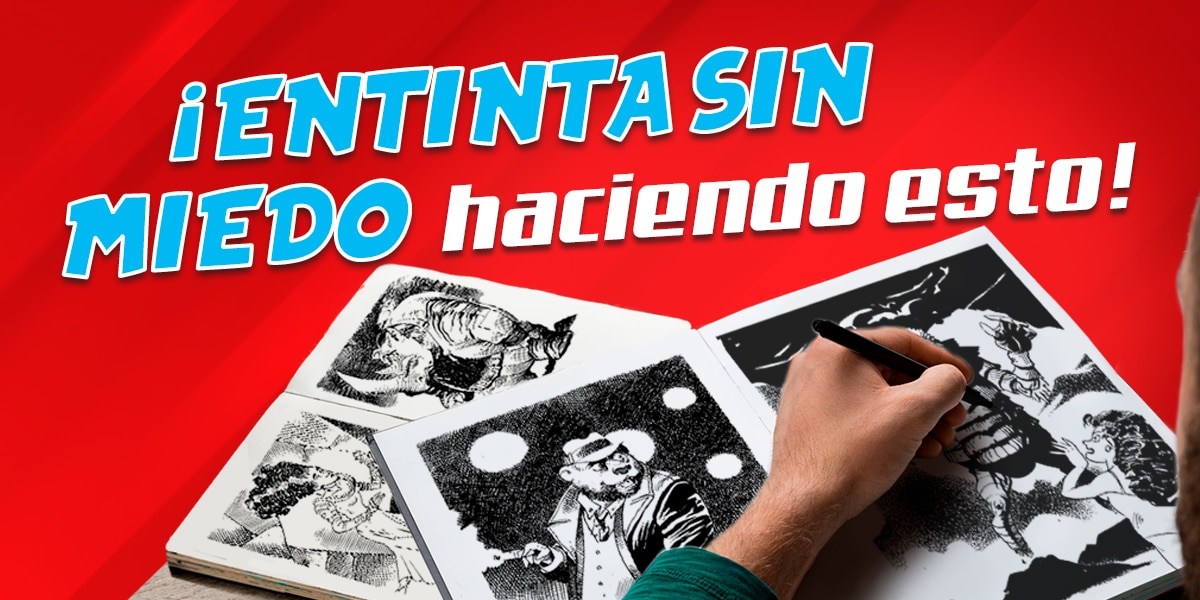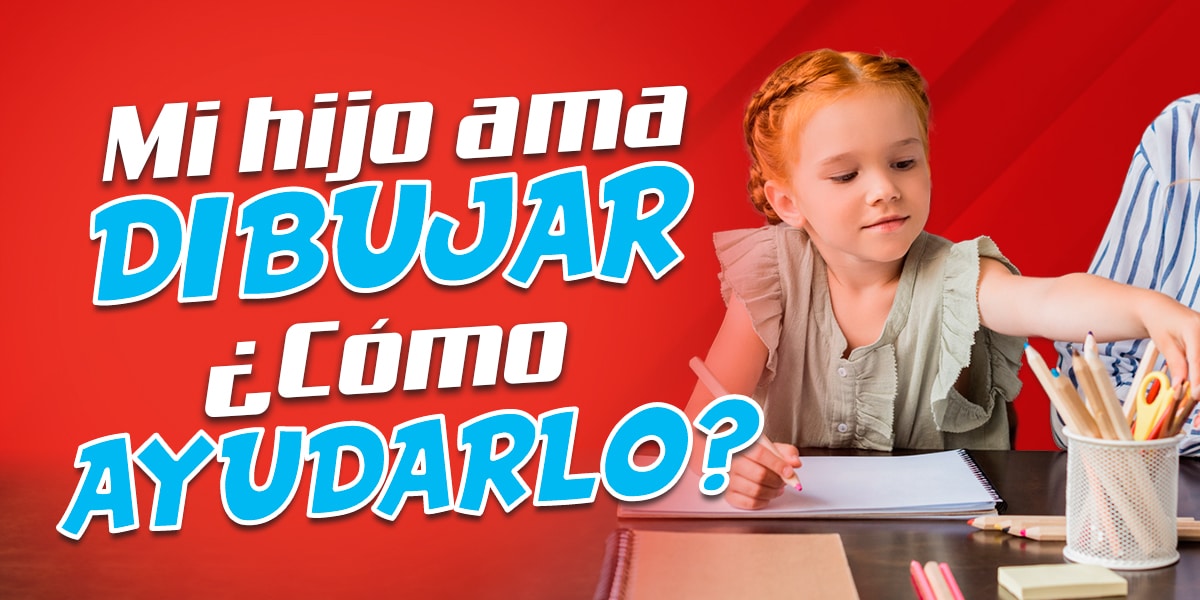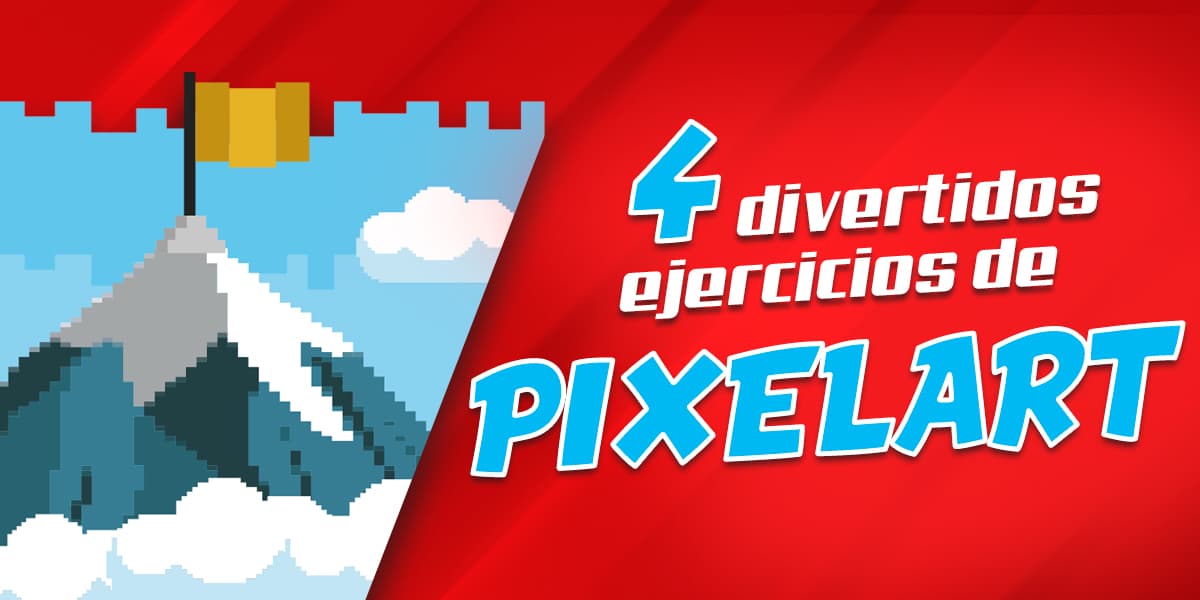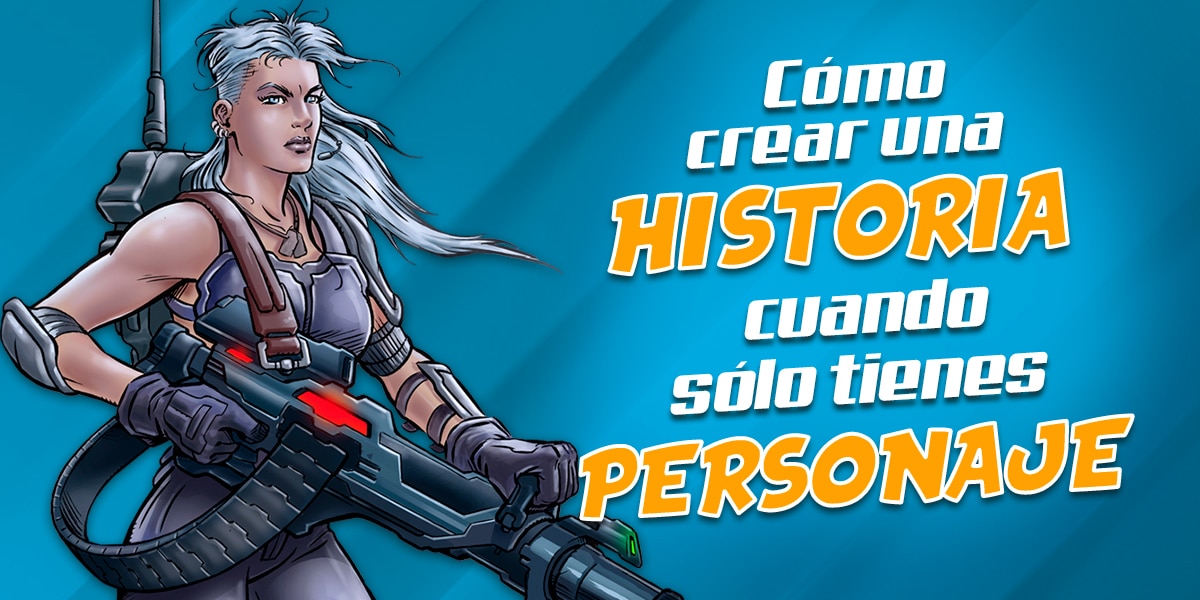ENTINTA SIN MIEDO: Descubre el Arte de Dar Vida a tus Dibujos
¿Alguna vez has sentido que tus dibujos a lápiz pierden su magia al pasarlos a tinta? ¿Te encuentras dudando cada vez que tomas un pincel o una pluma? ¡No temas más! En este artículo, te sumergiremos en el fascinante mundo del entintado, revelando secretos y técnicas que transformarán tu forma de ver y ejecutar este arte. Prepárate para liberar tu creatividad, superar tus miedos y descubrir un nuevo nivel en tus ilustraciones. ¡Sigue leyendo y da el salto que tu arte merece!
Por Martin Lietti
El Entintado: Mucho Más que Calcar tu Dibujo a Lápiz
El entintado es un arte en sí mismo, una danza delicada entre la precisión y la creatividad. Lejos de ser un simple acto de calcar, es el momento crucial donde tu ilustración o historieta cobra vida verdadera. Es aquí donde la magia sucede, donde los trazos tímidos del lápiz se transforman en declaraciones audaces de tinta.
Para que este proceso sea realmente gratificante, es fundamental que te liberes de la idea de reproducir exactamente lo que dibujaste a lápiz. En su lugar, considera tu boceto como un mapa, una guía que te orienta pero no te limita. Esta mentalidad te permitirá explorar, experimentar y, sí, incluso equivocarte y corregir. Recuerda, cada trazo de tinta es una oportunidad para mejorar y redefinir tu visión original.
Al pasar a tinta, notarás diferencias con tu dibujo a lápiz. ¡Esto es normal y deseable! No te frustres; celebra estas diferencias como parte del proceso creativo. La tinta tiene su propio lenguaje, su propia forma de expresar volumen, textura y emoción. Abrázala y descubre cómo llevar tus ilustraciones al siguiente nivel haciendo clic aquí.
Tus herramientas principales serán la pluma y el pincel. Cada una tiene sus propias características y potencial expresivo. Experimenta con ellas, encuentra la forma más cómoda de manipularlas. La comodidad en el manejo de tus herramientas se traducirá en líneas más seguras y expresivas.
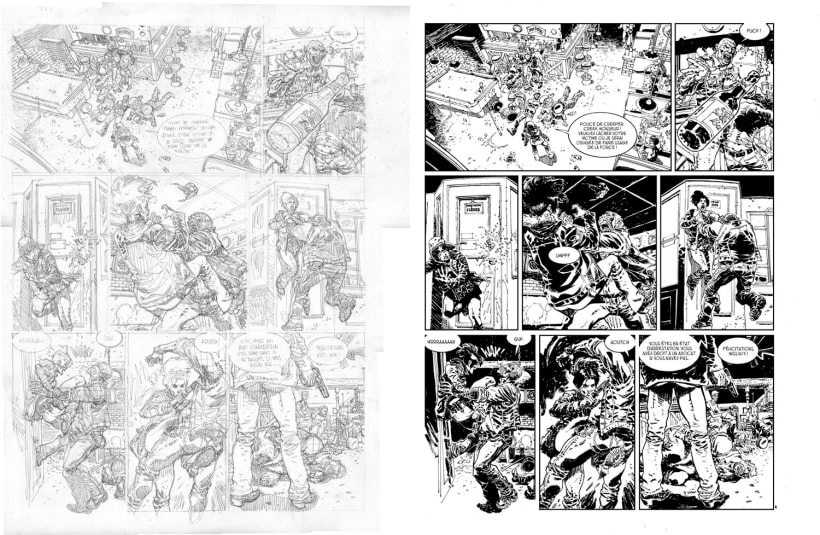
Observa cómo el lápiz proporciona el esqueleto de la página, pero el entintado le da vida y carácter propio. Las líneas, los tonos, la textura… todo cambia y se enriquece en el proceso de entintado. Este es el momento de dejar que tu creatividad fluya y de dar a tu obra una personalidad única.
Libera tu Mano: Ejercicios para Dominar el Arte del Entintado
Para desarrollar confianza y habilidad en el entintado, es crucial practicar regularmente. Aquí te presento una serie de ejercicios diseñados para liberar tu mano y fomentar la creatividad en el proceso de entintado:
- Del Boceto a la Tinta: Comienza con bocetos simples a lápiz, enfocándote solo en las estructuras básicas. Luego, pasa directamente a la tinta para agregar detalles, texturas y sombras. Este ejercicio te ayudará a desarrollar la confianza para trabajar directamente con tinta.
- Tinta Directa: Crea dibujos completamente a tinta, sin boceto previo. Empieza con formas abstractas y ve agregando complejidad gradualmente. Este enfoque te obligará a pensar en términos de tinta desde el principio.
- Juego de Blanco y Negro: Utiliza tinta china negra y acrílico blanco (o témpera) para crear contraste. Pinta áreas en negro y luego agrega detalles en blanco. Este ejercicio te enseñará a pensar en términos de luz y sombra.
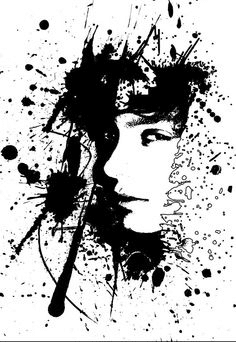
En esta imagen, observa cómo el uso del blanco sobre el negro crea un efecto dramático y añade profundidad a la ilustración. Esta técnica es especialmente útil para crear texturas y patrones intrincados.
Consejo Pro: No temas usar el blanco para corregir o añadir detalles. La combinación de negro y blanco te ofrece un mundo de posibilidades creativas. Explora más técnicas avanzadas de entintado aquí y lleva tus ilustraciones a otro nivel.
El Poder del Blanco y Negro: Más Allá de los Límites
El entintado reduce tu paleta a dos colores: blanco y negro. Pero no te dejes engañar por esta aparente limitación. En realidad, esta dualidad abre un universo de posibilidades creativas que están esperando ser exploradas.
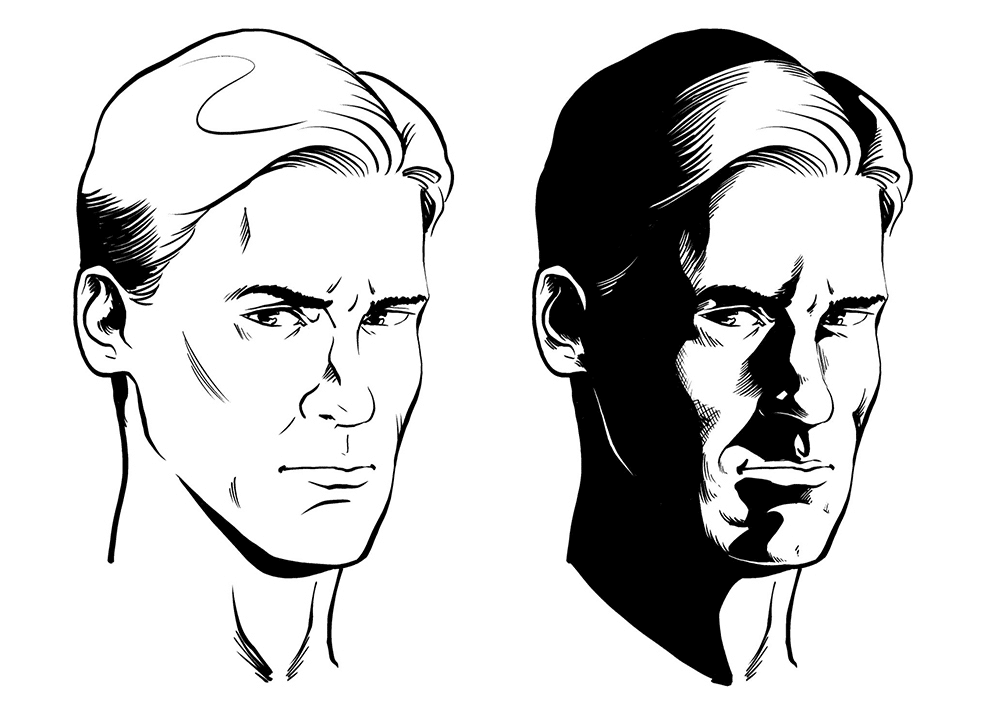
Observa la riqueza de texturas y tonos que se pueden lograr solo con blanco y negro. Cada línea, cada punto, cada área de sombra contribuye a crear una imagen dinámica y expresiva.
El arte del entintado se basa en la combinación magistral de líneas y planos (o puntos, líneas y planos, como diría Kandinsky). La línea, en particular, es un recurso expresivo de vital importancia. Es la columna vertebral de tu obra, capaz de transmitir emoción, movimiento y profundidad.
Para dominar el arte de la línea, te sugiero lo siguiente:
- Estudia y copia el trabajo de tus artistas favoritos. Analiza cómo utilizan la línea para crear diferentes efectos.
- Experimenta con diferentes tipos de líneas: prolijas, expresivas, sueltas, rotas, rápidas…
- Juega con el grosor y la modulación de las líneas para crear profundidad y énfasis.
Recuerda, el objetivo no es solo reproducir, sino encontrar tu voz única. ¿Quieres descubrir tu estilo personal en el entintado? Haz clic aquí para explorar más.
Experimenta, Juega y Diviértete: La Clave del Éxito
El secreto para dominar el entintado no está solo en la técnica, sino en la actitud con la que te acercas a él. La experimentación, el juego y la diversión son elementos cruciales en tu desarrollo artístico.
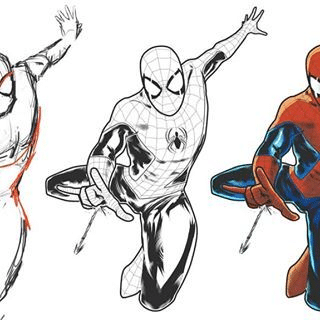
Esta imagen muestra diferentes técnicas de entintado. Observa cómo cada estilo crea una sensación y atmósfera única. La clave está en experimentar y encontrar qué funciona mejor para tu estilo personal.
Para ayudarte en tu viaje de experimentación, te propongo los siguientes ejercicios:
- Cuadrados de Texturas: Crea varios cuadrados y rellénelos con diferentes tipos de líneas (finas, gruesas, curvas, rectas). Experimenta con la dirección, la velocidad y la presión de tus trazos.
- Escala de Grises: Dibuja una serie de 5 cuadrados, desde el blanco puro hasta el negro sólido, creando una escala gradual de grises en el medio. Utiliza diferentes técnicas para lograr los tonos intermedios.
- Combinación de Herramientas: Crea un dibujo utilizando tanto pluma como pincel. Usa líneas más gruesas para los elementos en primer plano y más finas para los fondos, creando así profundidad en tu ilustración.
Estos ejercicios no solo mejorarán tu técnica, sino que también te ayudarán a descubrir nuevas formas de expresión. ¿Listo para llevar tu entintado al siguiente nivel? Descubre más ejercicios avanzados aquí.
El Plano: Tu Aliado en la Expresión Visual
Mientras que la línea es la columna vertebral de tu entintado, el plano es el músculo que le da forma y volumen. Los planos en blanco y negro son herramientas poderosas para crear profundidad, contraste y atmósfera en tus ilustraciones.
Genera Tonos Graduados: El Arte de la Sutileza
La creación de tonos graduados es una habilidad esencial en el entintado. Te permite añadir profundidad y dimensión a tus dibujos, creando transiciones suaves entre el blanco y el negro. Aquí tienes algunas técnicas para explorar:
- Hatching (rayado): Líneas paralelas para crear sombras y texturas.
- Cross-hatching (rayado cruzado): Superposición de líneas en diferentes ángulos para lograr tonos más oscuros.
- Stippling (punteado): Uso de puntos para crear gradientes y texturas.
- Scumbling (garabateo): Trazos circulares superpuestos para crear texturas orgánicas.
Experimenta con estas técnicas para crear una variedad de tonos, desde los más sutiles hasta los de alto contraste. Cada estilo comunica una sensación diferente al espectador, así que elige el que mejor se adapte a la atmósfera que deseas crear en tu obra.
Ejercicios Avanzados: Lleva tu Entintado al Siguiente Nivel
Para seguir desarrollando tus habilidades, te propongo estos ejercicios más avanzados:
- Alto Contraste: Toma un dibujo previo y transfórmalo en una versión de alto contraste. Elimina todas las líneas de contorno y define las formas únicamente mediante el contraste entre blanco y negro. Este ejercicio te ayudará a pensar en términos de luz y sombra, más allá de las líneas.
- Variedad Tonal sin Líneas: Utilizando el mismo dibujo, crea una versión que prescinda completamente de las líneas de contorno. En su lugar, genera variedad de tonos utilizando las técnicas de retícula que has practicado. Esto te desafiará a pensar en volúmenes y formas de una manera completamente nueva.
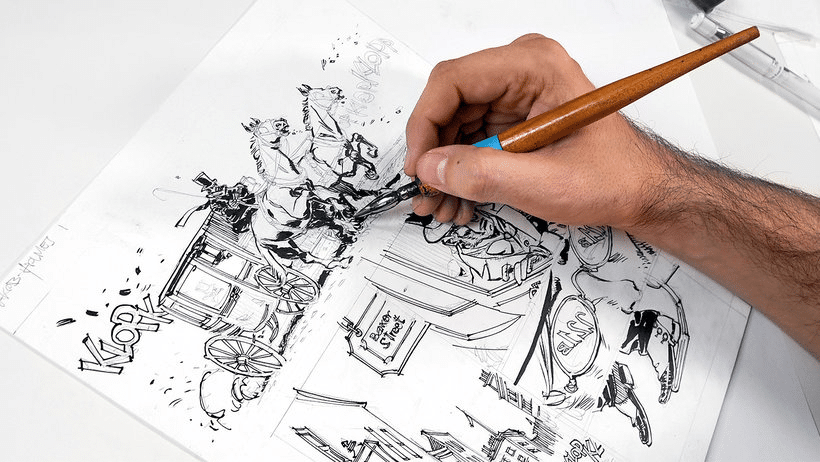
En esta imagen, puedes ver cómo el uso del alto contraste y la variedad tonal pueden crear imágenes impactantes sin depender de líneas de contorno. Observa cómo la luz y la sombra definen las formas y crean profundidad.
Estos ejercicios te ayudarán a ver más allá de las líneas y a pensar en términos de masas y volúmenes. ¿Quieres perfeccionar aún más estas técnicas avanzadas? Descubre recursos adicionales aquí.
Libera tu Creatividad: El Entintado como Proceso Creativo
Es crucial entender que el entintado no es simplemente la fase final de tu trabajo, sino una etapa creativa por derecho propio. No te limites a copiar fielmente tu boceto a lápiz. En su lugar, considera el entintado como una oportunidad para expandir y mejorar tu idea original.
Aquí tienes algunas formas de abordar el entintado de manera creativa:
- Experimenta con diferentes grosores de línea para enfatizar ciertos elementos.
- Añade texturas y patrones que no estaban en tu boceto original.
- Juega con el contraste para crear focos de atención.
- Utiliza técnicas de sombreado para añadir profundidad y volumen.
Recuerda, el entintado no es solo negro sobre blanco, es la danza armoniosa de ambos. Cada trazo, cada área de negro o blanco, es una decisión creativa que impacta en la narrativa visual de tu obra.
Conclusión: Tu Viaje en el Arte del Entintado
El entintado es un arte que combina habilidad técnica con expresión creativa. A lo largo de este artículo, hemos explorado diversas técnicas y ejercicios diseñados para ayudarte a dominar este fascinante aspecto de la ilustración. Desde la importancia de liberar tu mano hasta el poder expresivo del blanco y negro, cada sección te ha proporcionado herramientas para mejorar tu arte.
Recuerda, la clave del éxito en el entintado radica en la práctica constante y en la voluntad de experimentar. No temas cometer errores; cada trazo es una oportunidad de aprendizaje y crecimiento. Utiliza los ejercicios propuestos como punto de partida, pero no dudes en adaptarlos y crear los tuyos propios.
El entintado es un viaje de descubrimiento personal y artístico. A medida que desarrolles tus habilidades, encontrarás tu estilo único y tu voz como artista. Disfruta del proceso, celebra tus logros y no dejes de desafiarte a ti mismo.
Ahora, armado con estos conocimientos y técnicas, estás listo para sumergirte en el fascinante mundo del entintado. Recuerda que cada línea que trazas, cada sombra que creas, es una expresión de tu visión artística única. No temas experimentar, equivocarte y aprender de cada experiencia.
Te invito a que revises este artículo periódicamente, especialmente cuando te enfrentes a nuevos desafíos en tu arte. Cada vez que lo leas, podrás descubrir nuevos matices y aplicar los consejos de manera diferente, a medida que tu habilidad y comprensión crezcan.
¿Listo para llevar tu arte del entintado al siguiente nivel? Haz clic aquí para descubrir recursos adicionales y técnicas avanzadas que te ayudarán a perfeccionar tu estilo y expandir tus horizontes creativos.
Recuerda, el entintado es más que una técnica; es una forma de expresión artística. Con práctica, paciencia y pasión, verás cómo tus ilustraciones cobran vida de maneras que nunca imaginaste. ¡Adelante, toma tu pluma o pincel, y comienza a crear magia en blanco y negro!

